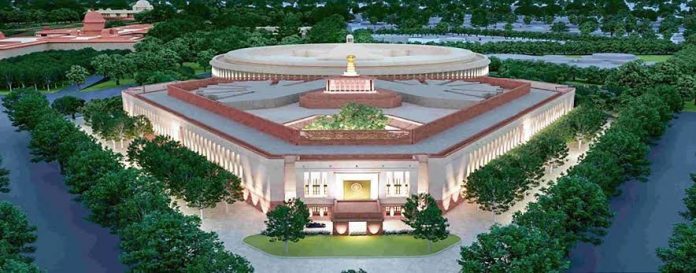Are You Want to Know More Information on the Power of Democracy-Inaugurating New Parliament of India Then, you must read this blog post. Let’s get into detail about the latest blog post – The Power of Democracy-Inaugurating India’s New Parliament.
1) Introduction
Early in the 2010s, ideas for a new parliament building to replace the current complex surfaced due to concerns about its stability. Speaker Meira Kumar, who was in office at the time, had formed a committee to develop several alternatives to the current structure.
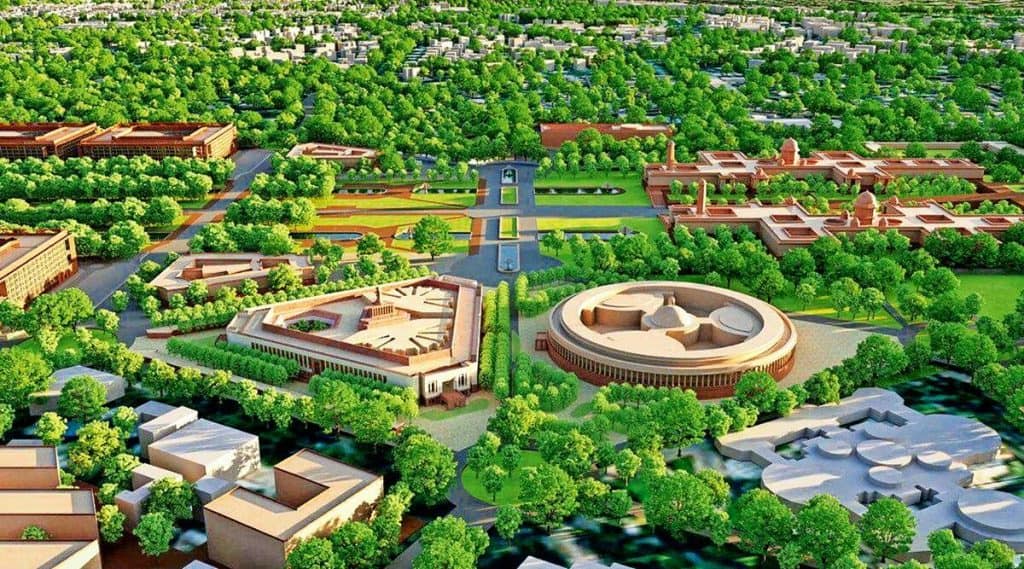
To acknowledge the significant role of the building in India’s national history, authorities are actively preparing to safeguard the 93-year-old current structure, which they believe has structural issues and lacks sufficient space to accommodate members and their employees.
2) When will be Inauguration of the New Parliament?
In October 2020, there was a ceremony to mark the building’s foundation. The first brick was put on December 10, 2020. Prime Minister Modi to Inaugurate New Parliament on May 28, 2023, in Delhi.
Justice A. M. Khanwilkar of the Supreme Court of India halted the Central Vista Redevelopment Project in its entirety, despite the approval for laying the foundation stone.
Prime Minister Narendra Modi placed the building’s foundation stone on December 10, 2020. Religious leaders led an interfaith prayer session as part of the occasion. After receiving approval from the Supreme Court in January 2021, construction on the building commenced, incorporating riders to address environmental concerns.
3) Design / Architect of New Parliament
The new complex will be triangular in shape, according to Bimal Patel, the architect in charge of the redevelopment of Central Vista. It will be constructed next to the current complex and will be nearly identical to it.
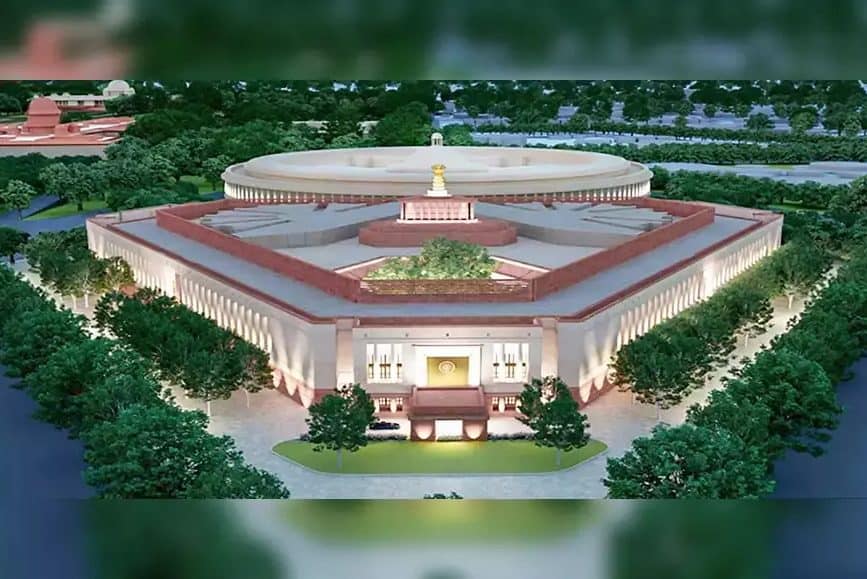
The building is designed to stand for more than 150 years. The building will feature architectural styles from several different regions of India and be built to withstand earthquakes. The anticipated Lok Sabha and Rajya Sabha chambers would have roomy seating capacities to accommodate more members than are now present since the number of MPs may increase as a result of India’s growing population and subsequent future redistricting.
4) Total Build Area
The building will be 10% smaller in size than the old circular building, which is currently 22,900 m2 (diameter 170.7 m) including its open sky area of 6,060 m2 or 1.5 acres, split into 3 sectors, each half an acre. The structure will have a constructed area of 20,866 m2(2,000 m2 of which will be an open sky area for a banyan tree).
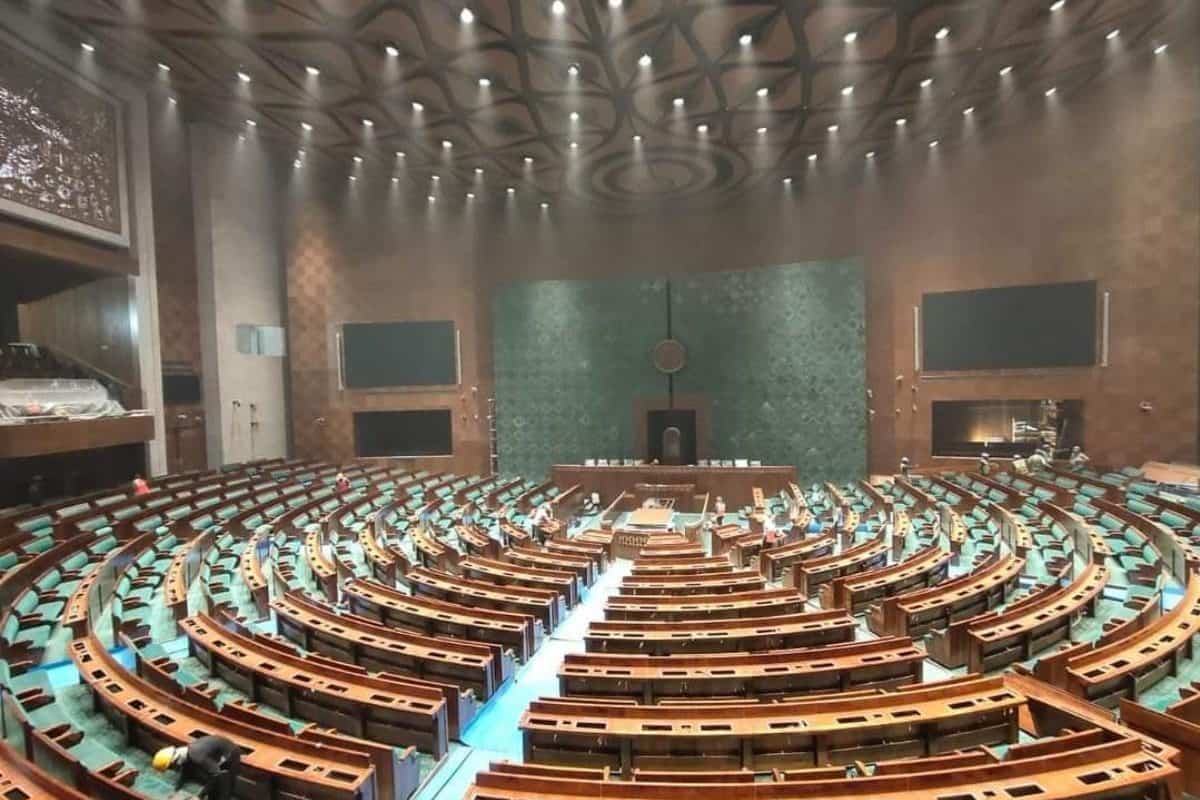
There will be 384 Rajya Sabha seats and 888 Lok Sabha seats combined in the new complex. There won’t be a central hall like there is in the current parliament building. If there is a combined session, 1,272 members can fit in the Lok Sabha chamber. The remaining four stories of the structure will house committee rooms and ministers’ offices.
5) Central Vista Project
The Central Vista Redevelopment Project, launched by the Indian government in 2019, included additional projects in New Delhi, including the renovation of Kartavya Path, the construction of a new residence for the Vice President, the creation of the Prime Minister’s new office and residence, and the consolidation of all ministry structures into a single central secretariat.
| Total Budget | 862 crores |
| Architect | Bimal Patel |
| Main contractor | Tata Projects Ltd |
| Inaugurated | May 28, 2023 |
| Height | 39.6 m |
6) What is Sengol?
The Sengol, also known as the “Transfer of Power Sceptre,” holds significant historical and cultural value in India. It is a sceptre that was originally crafted in Tamil Nadu and modeled after the ancient Sengol used during the reign of the Chola Kingdom.
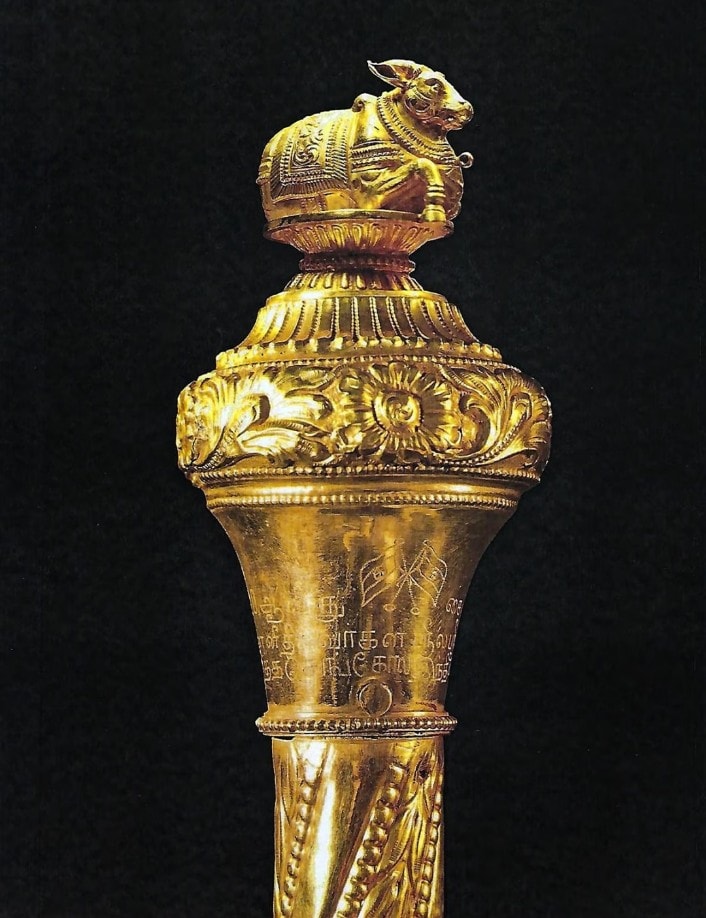
The Sengol gained prominence during the British colonial era when it was presented to Jawaharlal Nehru, the first Prime Minister of India, symbolizing the transfer of power from the British rulers to the newly independent nation. The British intended it to represent the handing over of governance and authority to the people of India.
7) Why is Sengol Installed in New Parliament Building?
In a significant move, Prime Minister Modi has decided to install the historic gold Sengol (scepter) in the new Parliament building. Union Minister Amit Shah highlighted the significance of the Sengol, revealing its placement behind the seat of the Speaker.
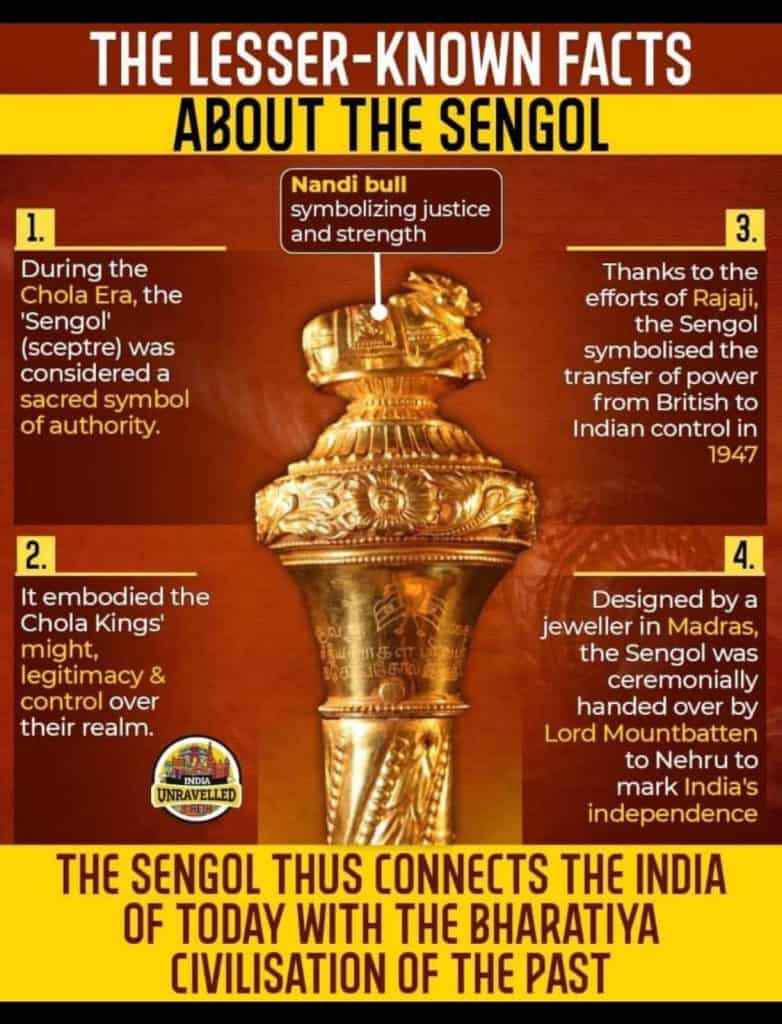
Currently, the Sengol, originally presented to Jawaharlal Nehru, the first Prime Minister of India, to commemorate the transfer of power from the British, finds its home in the Allahabad Museum. However, plans are underway to relocate it to the new Parliament of India building. Believed to belong to the esteemed Chola Empire, the Sengal holds immense historical and cultural significance.
8) Known Facts about the Sengol
- Nandi bull symbolizes Justice and Strength.
- During the Chola Era, the’Sengol'(sceptre) was considered a sacred symbol of authority.
- it embodied the Chola Kings might legitimacy & control over their realm.
- Thanks to the Rajaji, the sengol symbolised the transfer of power from British to Indian control in 1947.
- Designed by a jeweler in Madras, the sengol was ceremonially handed over by Lord Mountbatten to Nehru to mark India’s independence.
9) Rs.75 Coin unveiling in Inauguration of Parliament
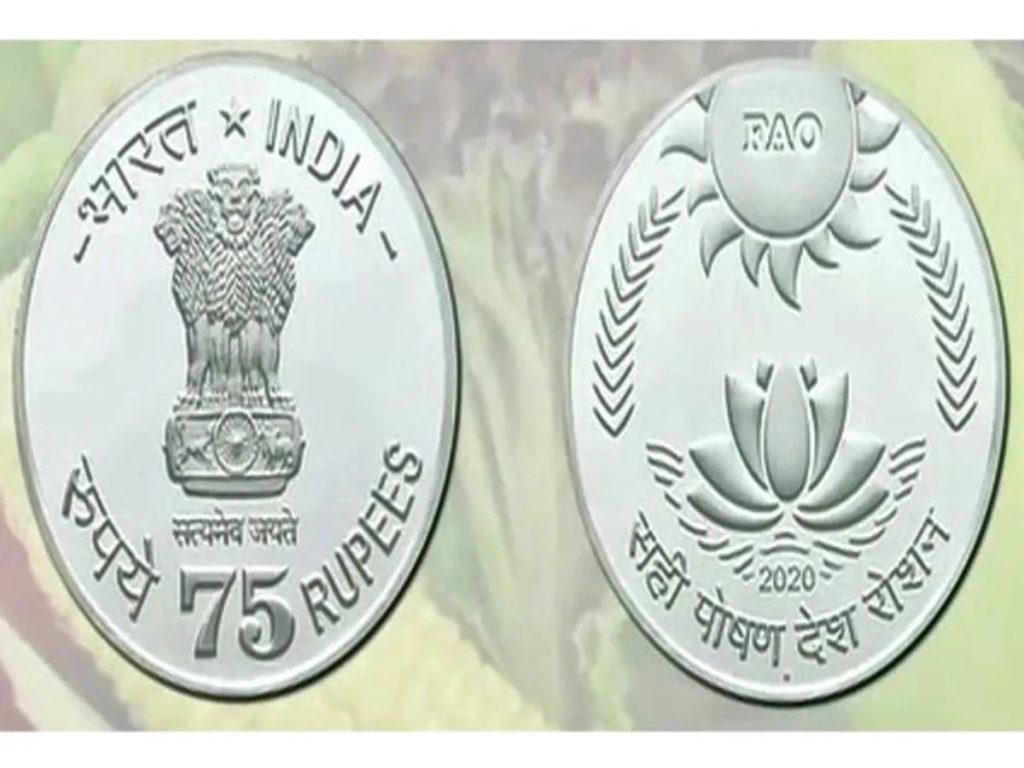
The Ministry of Finance has announced the unveiling of a Rs. 75 coin to commemorate the inauguration of the new Parliament of India building. The department stated that the coin symbolizes the country’s freedom even after 75 years, with the background representing unity. The coin features Ashoka with lions and a stupa, below which “Satyameva Jayate” is inscribed. On one side, the coin displays “Bharat” in Devanagari script, while the other side bears the word “INDIA” in English.
10) Special Moments in the Inauguration of the New Parliament
Prime Minister Modi to Inaugurate the new parliament of India on May 28, 2023. A Festive Occasion in Two Phases, Speaker of the Lok Sabha and Prime Minister Modi’s inaugural program, It will be prepared beforehand. Pujas are performed in the morning custom. After this speaker’s speech and a video presentation on the structure of Parliament will follow. and next, The Prime Minister officially revealed the Rs. 75 coin Speech to be given.
11) Conclusion:
The grand opening of the new Parliament of india building marked a significant milestone in the nation’s democratic journey. It showcased the harmonious blend of tradition and modernity, paying homage to India’s rich heritage while embracing progress. The event served as a testament to India’s unwavering commitment to democracy, transparency, and inclusive governance.
Also, Read Our Latest Blog Posts:
- The New Evolution of Telangana Secretariat and The Tallest Ambedkar Statue: Symbol of Equality and Justice
- A Wonderful Drive Trip On Outer Ring Road, Hyderabad
- Brief Info of Regional Ring Road, Hyderabad
- Hyderabad Metro Route Maps, Timings, Ticket Rates
- Vande Bharat Express: India’s High-Speed Marvel
- Exploring Hyderabad’s Mobility Valley: The Hub of Innovation and Connectivity
- Do You Know 13 Myths About HMDA Master Plan?
- Why Must Visit 15 Places in Hyderabad?
- Do You Know-BEST 10 PLACES TO VISIT IN WARANGAL
- Gold vs Real Estate: Which Is The Better & Smart Investment?
- Which House Facing Direction is Better to Live?
Frequently Asked Questions
A: On 28th May 2023 will be inaugurated the New Parliament.
A: The Total Budget of the New Parliament is 862 crores.
A: Bimal Patel is the Architecture of New Parliament.
A: The Sengol, also known as the “Transfer of Power Sceptre,” holds significant historical and cultural value in India. It is a sceptre that was originally crafted in Tamil Nadu and modeled after the ancient Sengol used during the reign of the Chola Kingdom.
A: Tata Project Ltd Company is the Main Contractor of the New Parliament Project.


















